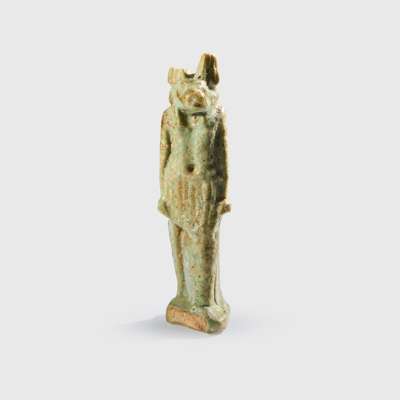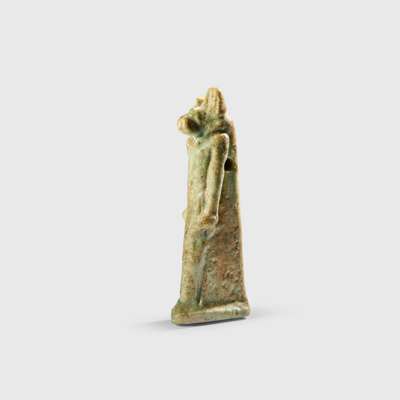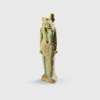
Lot 98

ANCIENT EGYPTIAN ANUBIS AMULET
EGYPT, LATE PERIOD, C. 664 - 332






African & Oceanic Art, Natural History and Ancient Art
Auction: 30 July 2025 from 14:00 BST
Description
Faience, the deity Anubis shown as a man in a striding position with a jackal head, wearing a kilt with his arms extended down the sides of his body, standing on a rectangular base with a back pillar, a hole pierced behind the chest
Dimensions
4.8cm tall
Provenance
John Hunt, Mayor of Preston (fl. 1920s), United Kingdom, thence by descent
John Hunt was the Mayor of Preston during the 1920s and played a key role in the town’s civic life. In 1927, he hosted King Fuad I of Egypt during the monarch’s visit to Horrockses Cotton Mills. As a gesture of thanks, Hunt was gifted a number of Egyptian artefacts, including the present piece.
Footnote
For similar, please see The Metropolitan Museum, New York, accession number 2021.41.33.
In ancient Egyptian religion, Anubis was the god of funerary rites, protector of graves, and a guide to the underworld. Most ancient tombs had prayers to Anubis carved on them. Amulets in Ancient Egypt were both practical and decorative, bestowing apotropaic powers upon the wearer. Small amulets of deities induced the protective powers of that god or goddess. Anubis amulets were usually placed on the chest inside the wrappings of the mummy in order to ensure the deceased a safe passage into the afterlife.





